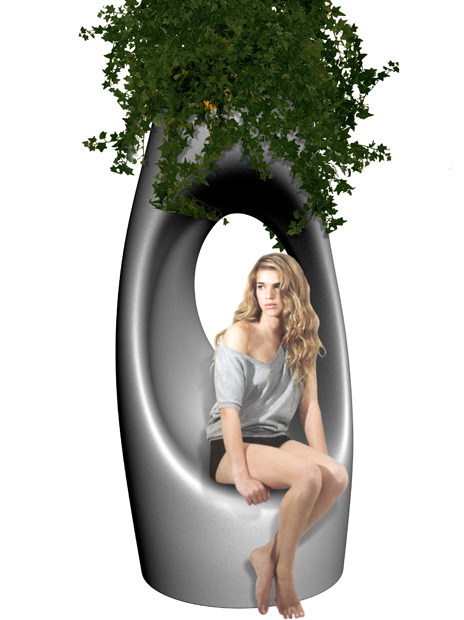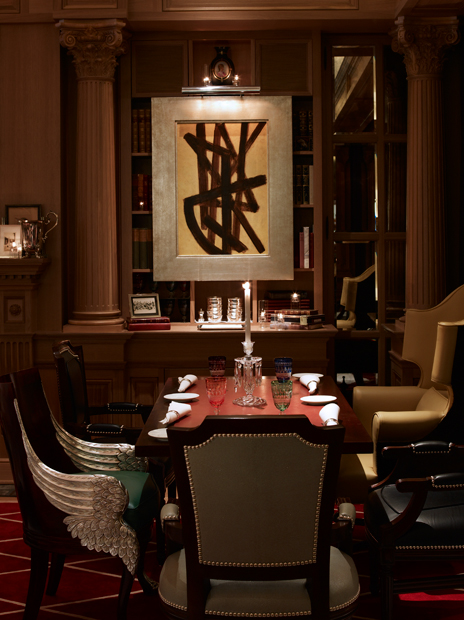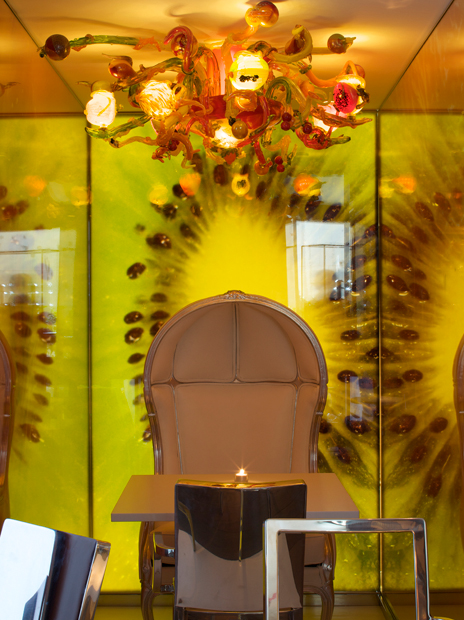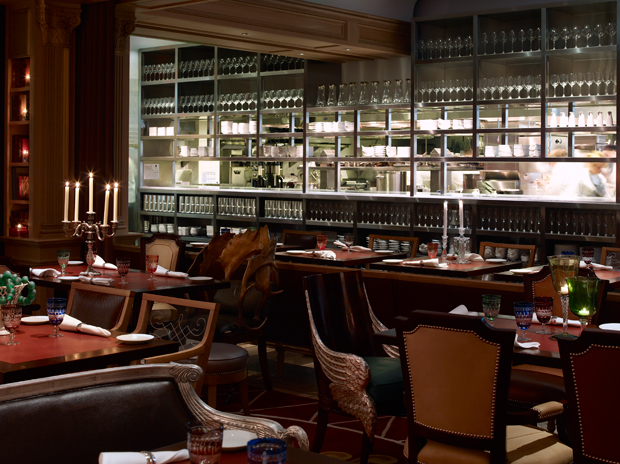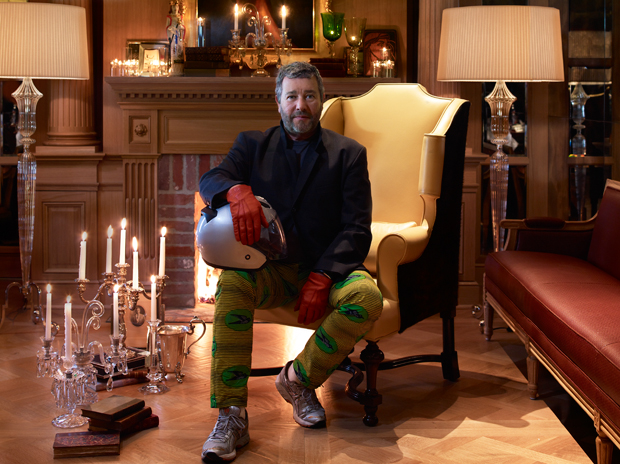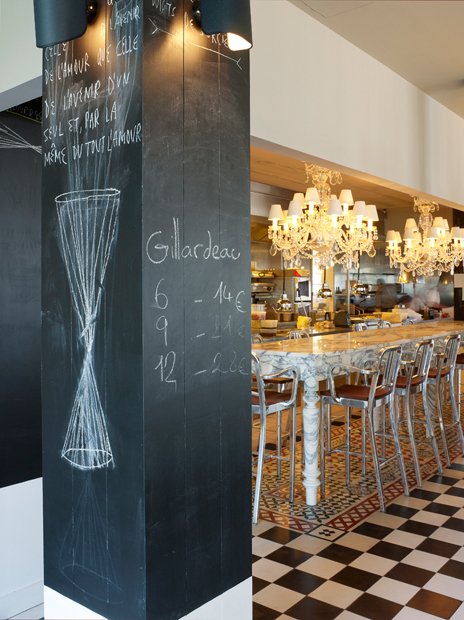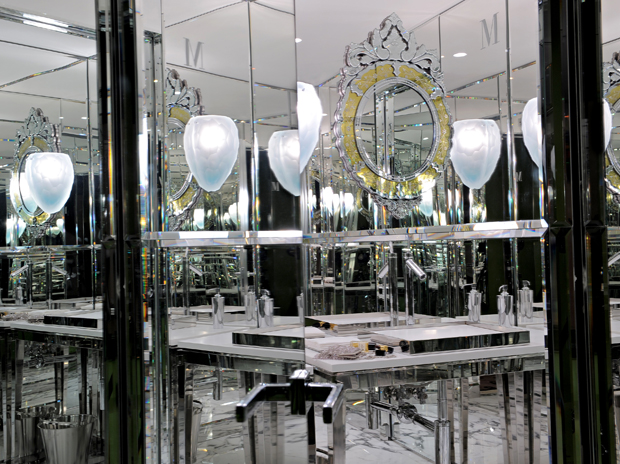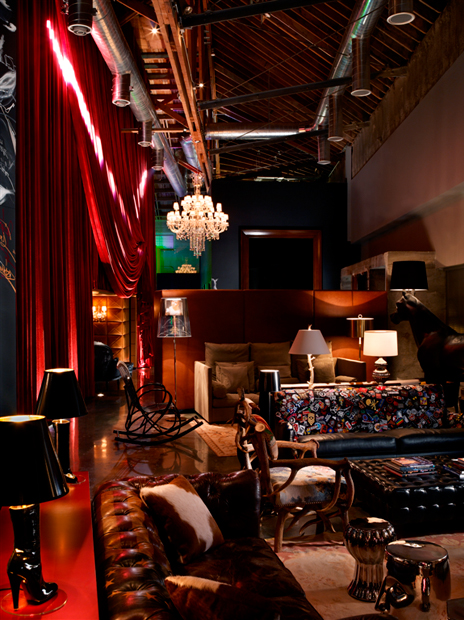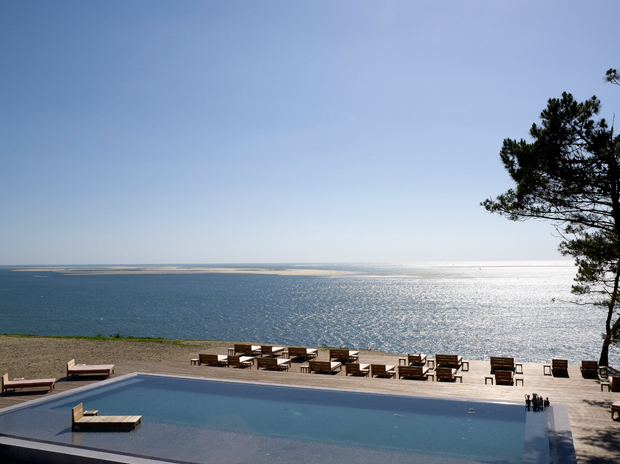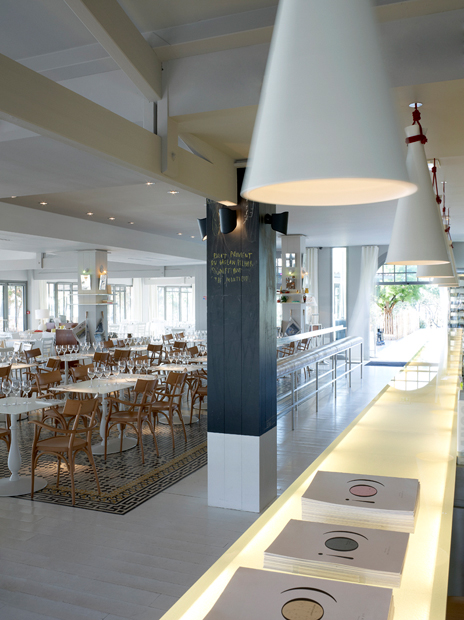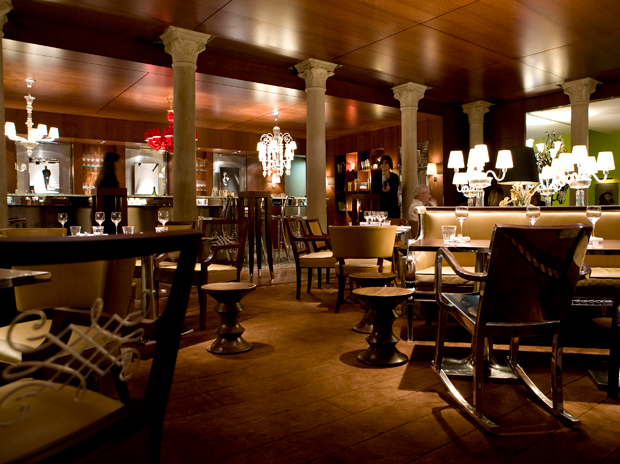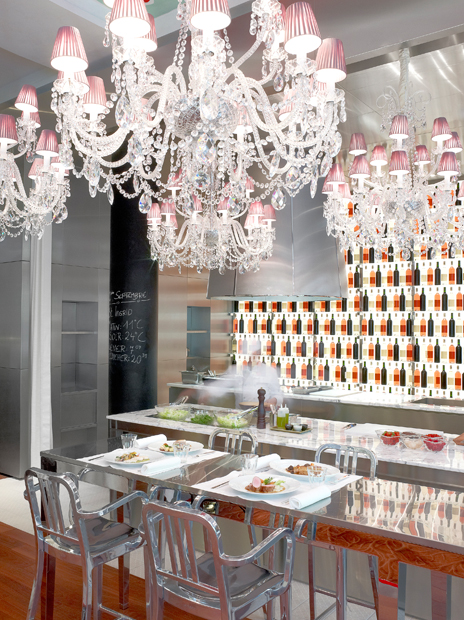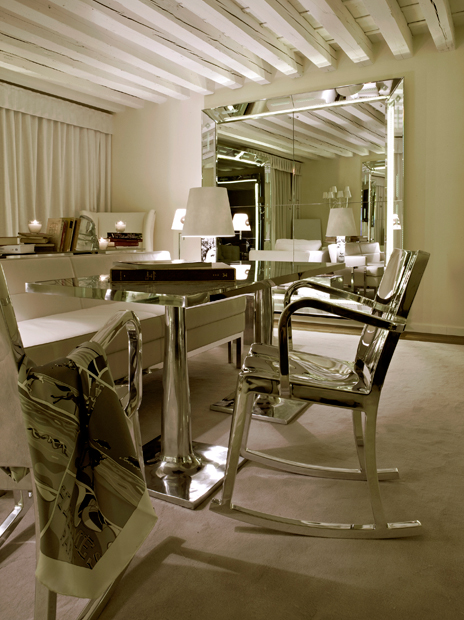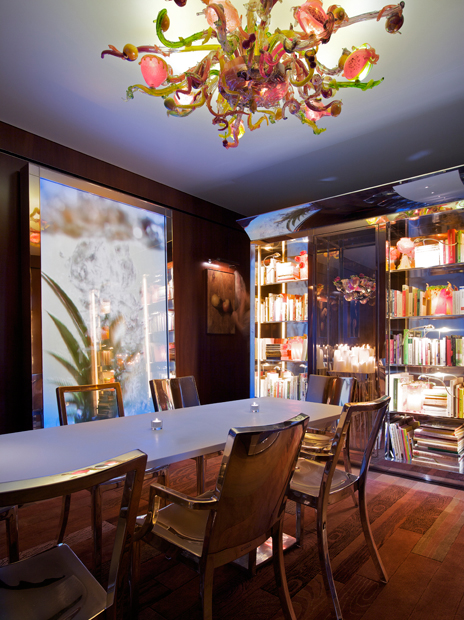A world without Philippe Starck is as inconceivable as it is conceivable. His influence on the world of design - the process by which humans shape and meet their own needs - is at one and the same time ubiquitous and diffuse. It is at times visible in everything and simultaneously barely identifiable. His work embodies the principles of elite design - that the designed world must have its own aesthetic and spiritual identity both separable from and serving its function.
In an extraordinary thirty year career, Starck has made a profound and often revolutionary contribution to almost every facet of the ever expanding and ever reconfiguring world of design. On graduating from École Nissim de Camondo in Paris, by which point he was already producing radical innovations such as the inflatable house he created in 1969, he caught the eye of no less than Pierre Cardin, who made him artistic director at his publishing house. Starck has never been a monoglot in the language of design, and by 1976 it was his audacious interiors that dragged nightclubs La Main Bleue and Les Bains Douches onto the main stage of Paris nightlife, the latter going on to attain legendary status. Founding his first design company at the same time, even at this early stage in his remarkable career, Starck’s insatiable versatility was already instinctive and hugely successful as Starck Product began collaborations with the biggest names in European design - including Alessi, Kartell and Driade - that would continue for decades.
As a designer, he has been responsible for some of the most recognizable and innovative pieces of mass produced design of the late twentieth century. Pieces such as his transparent plastic Louis Ghost Chair, a staggering reworking of one of the aristocratic icons of French furniture design, the iconic Bubble Chairs or his Juicy Salif citrus squeezer, became icons of design in the 1980s and 1990s. Through his mastery of modern materials, Starck’s used a simple and accessible design vocabulary to write intriguing new visual phrases that provoked lasting and profound conversations with the consumer.
Starck’s fame was sealed in 1985 when President François Mitterrand chose him to create the interiors in the private presidential residence at the Élysée Palace. The following year, his reputation in the interior design world exploded with his groundbreaking and inimitable styling of Café Costes, uniting function and beauty in a stunning re-imagining of the Parisian café that became definitive of its era.
Starck’s contribution to the world of elite hospitality has continued and expanded ever since, including the culinary theater - literally - of converted and new build playhouses at Teatron in Mexico, Teatriz in Madrid and Felix in Hong Kong. Completed in 1994, this last project is a cameo of classic Starck - a theatrical aerie perched on the 28th Floor of the Peninsula Hotel that gazes across the world famous skyline and down on the mercantile mayhem below. His overarching influence in his native Paris has continued unimpeded by the global demand for his work. This can be seen most notably with his splendid and respectful 2004 transformation of the former home of Marie-Laure de Noailles, doyenne of the golden era of modern art in Paris, into Palais de Cristal de la Maison Baccarat, the museum and headquarters of one of the world’s premier crystal design houses. His collaboration with Baccarat has proved especially fruitful, with Starck designing both the adjacent restaurant, called the Cristal Room Baccarat and known as an eatery of impeccable repute by Parisian fine diners, and the Maison Baccarat in Moscow, which opened in 2008 and stylishly celebrates the company’s historic relationship with Russia since the days of Tsar Nicholas II.
Philippe Starck design adorns and elevates some of the most exclusive restaurants in the most glamorous cities in the world, and recent years have premiered a host of glittering projects, including the Paris openings of the Mori Venice Bar and the Paradis du Fruit in 2004 and 2009 respectively. In 2006, his knavish interpretation of Hollywood chic drew great attention to the opening of hip sushi hangout Katsuya, which has become one of the foremost restaurants on the star circuit. Starck has always cannily moved with the market, and the vast lavishness of his Beijing restaurant Lan announced in 2007 his move into the newest and most rapidly expanding market of them all.
Interiors, and the presentation and consumption thereof became Starck’s new focus, and, like in all stages of his glittering career, he smashed the barriers between innovation and economic success. In 1988, former nightclub impresario and visionary Ian Schrager instinctively turned to Starck for his new project - a small, exclusive, ultra-modern hotel space bespoke-designed to entice the beautiful people of the it crowd, focusing on the inherent theatricality of the hotel experience. From this relationship, the Royalton in New York was born, and the boutique hotel concept they created sent the hotel industry in a radical and lucrative new creative direction. Schrager and Starck have since collaborated to enormous artistic and financial success on what have become some of the most feted hotels in the world - Miami’s the Delano opened in 1995, Los Angeles welcomed the Mondrian, and then St Martins Lane and the Sanderson opened to great acclaim in London in 1999 and 2000 respectively. The Hudson in New York, the Faena Hotel+Universe in Buenos Aires, the Hotel Fasano in Rio de Janeiro have all opened in the last ten years and ensure that Starck’s witty and spectacular design vision features prominently in the most important cities on the global design map.
Starck has now set his sights on the elite five star hotel sector, heralded by another groundbreaking collaboration - this time with hospitality mogul Sam Nazarain - and a luxury hotel brand, SLS. The first SLS opened its doors in Beverly Hills in 2008 and has already established itself as one of the premier hotels on the West Coast. Highlights include the Bazaar, a remarkable indoor piazza in which guests are offered an extraordinary array of dining and lounge venues, with exquisite cuisine provided by renowned chef José Andrés. October this year also saw the reopening of Paris icon Le Royal Monceau, one of the most important luxury hotels of the Twentieth Century, having hosted everyone from Ho Chi Minh to Michael Jackson. Starck’s effortless design both pays homage to and modernizes the legendary combination of class and luxury, the essential Frenchness, of the hotel.
In 2010, Phillipe Starck is now operating on a level that perhaps more refined and multi-faceted than any designer in history, recognized commercially and artistically and now politically - having been Artistic Director for the French Presidency of the European Union in 2008 and the Ambassador for Creativity and Innovation in 2009. His restless multi-talented creativity is and has always been hungry to speak beyond the parameters of the project, so that one’s experience of his work is never just about the work, but in some way about everything.
- Benjamin Stewart
Philippe Starck
Address: 36 Rue Scheffer
Paris, 75116
Tel: 1 48 07 54 54
Website: www.starck.com
Photo Credits: Philippe Garcia: La Coorniche, Le Royal Monceau
Aldo and Cristiana Martinelli: Palazzina Grassi
Francis Amiand: Paradis du Fruit
In an extraordinary thirty year career, Starck has made a profound and often revolutionary contribution to almost every facet of the ever expanding and ever reconfiguring world of design. On graduating from École Nissim de Camondo in Paris, by which point he was already producing radical innovations such as the inflatable house he created in 1969, he caught the eye of no less than Pierre Cardin, who made him artistic director at his publishing house. Starck has never been a monoglot in the language of design, and by 1976 it was his audacious interiors that dragged nightclubs La Main Bleue and Les Bains Douches onto the main stage of Paris nightlife, the latter going on to attain legendary status. Founding his first design company at the same time, even at this early stage in his remarkable career, Starck’s insatiable versatility was already instinctive and hugely successful as Starck Product began collaborations with the biggest names in European design - including Alessi, Kartell and Driade - that would continue for decades.
As a designer, he has been responsible for some of the most recognizable and innovative pieces of mass produced design of the late twentieth century. Pieces such as his transparent plastic Louis Ghost Chair, a staggering reworking of one of the aristocratic icons of French furniture design, the iconic Bubble Chairs or his Juicy Salif citrus squeezer, became icons of design in the 1980s and 1990s. Through his mastery of modern materials, Starck’s used a simple and accessible design vocabulary to write intriguing new visual phrases that provoked lasting and profound conversations with the consumer.
Starck’s fame was sealed in 1985 when President François Mitterrand chose him to create the interiors in the private presidential residence at the Élysée Palace. The following year, his reputation in the interior design world exploded with his groundbreaking and inimitable styling of Café Costes, uniting function and beauty in a stunning re-imagining of the Parisian café that became definitive of its era.
Starck’s contribution to the world of elite hospitality has continued and expanded ever since, including the culinary theater - literally - of converted and new build playhouses at Teatron in Mexico, Teatriz in Madrid and Felix in Hong Kong. Completed in 1994, this last project is a cameo of classic Starck - a theatrical aerie perched on the 28th Floor of the Peninsula Hotel that gazes across the world famous skyline and down on the mercantile mayhem below. His overarching influence in his native Paris has continued unimpeded by the global demand for his work. This can be seen most notably with his splendid and respectful 2004 transformation of the former home of Marie-Laure de Noailles, doyenne of the golden era of modern art in Paris, into Palais de Cristal de la Maison Baccarat, the museum and headquarters of one of the world’s premier crystal design houses. His collaboration with Baccarat has proved especially fruitful, with Starck designing both the adjacent restaurant, called the Cristal Room Baccarat and known as an eatery of impeccable repute by Parisian fine diners, and the Maison Baccarat in Moscow, which opened in 2008 and stylishly celebrates the company’s historic relationship with Russia since the days of Tsar Nicholas II.
Philippe Starck design adorns and elevates some of the most exclusive restaurants in the most glamorous cities in the world, and recent years have premiered a host of glittering projects, including the Paris openings of the Mori Venice Bar and the Paradis du Fruit in 2004 and 2009 respectively. In 2006, his knavish interpretation of Hollywood chic drew great attention to the opening of hip sushi hangout Katsuya, which has become one of the foremost restaurants on the star circuit. Starck has always cannily moved with the market, and the vast lavishness of his Beijing restaurant Lan announced in 2007 his move into the newest and most rapidly expanding market of them all.
Interiors, and the presentation and consumption thereof became Starck’s new focus, and, like in all stages of his glittering career, he smashed the barriers between innovation and economic success. In 1988, former nightclub impresario and visionary Ian Schrager instinctively turned to Starck for his new project - a small, exclusive, ultra-modern hotel space bespoke-designed to entice the beautiful people of the it crowd, focusing on the inherent theatricality of the hotel experience. From this relationship, the Royalton in New York was born, and the boutique hotel concept they created sent the hotel industry in a radical and lucrative new creative direction. Schrager and Starck have since collaborated to enormous artistic and financial success on what have become some of the most feted hotels in the world - Miami’s the Delano opened in 1995, Los Angeles welcomed the Mondrian, and then St Martins Lane and the Sanderson opened to great acclaim in London in 1999 and 2000 respectively. The Hudson in New York, the Faena Hotel+Universe in Buenos Aires, the Hotel Fasano in Rio de Janeiro have all opened in the last ten years and ensure that Starck’s witty and spectacular design vision features prominently in the most important cities on the global design map.
Starck has now set his sights on the elite five star hotel sector, heralded by another groundbreaking collaboration - this time with hospitality mogul Sam Nazarain - and a luxury hotel brand, SLS. The first SLS opened its doors in Beverly Hills in 2008 and has already established itself as one of the premier hotels on the West Coast. Highlights include the Bazaar, a remarkable indoor piazza in which guests are offered an extraordinary array of dining and lounge venues, with exquisite cuisine provided by renowned chef José Andrés. October this year also saw the reopening of Paris icon Le Royal Monceau, one of the most important luxury hotels of the Twentieth Century, having hosted everyone from Ho Chi Minh to Michael Jackson. Starck’s effortless design both pays homage to and modernizes the legendary combination of class and luxury, the essential Frenchness, of the hotel.
In 2010, Phillipe Starck is now operating on a level that perhaps more refined and multi-faceted than any designer in history, recognized commercially and artistically and now politically - having been Artistic Director for the French Presidency of the European Union in 2008 and the Ambassador for Creativity and Innovation in 2009. His restless multi-talented creativity is and has always been hungry to speak beyond the parameters of the project, so that one’s experience of his work is never just about the work, but in some way about everything.
- Benjamin Stewart
Philippe Starck
Address: 36 Rue Scheffer
Paris, 75116
Tel: 1 48 07 54 54
Website: www.starck.com
Photo Credits: Philippe Garcia: La Coorniche, Le Royal Monceau
Aldo and Cristiana Martinelli: Palazzina Grassi
Francis Amiand: Paradis du Fruit
Philippe Starck








